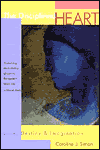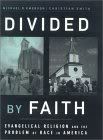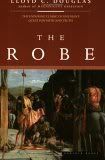 Having looked briefly at romantic love, the second part of chapter 5 deals with married love. As previously mentioned, Simon differentiates the two on her concept of destiny, with marriage moving forward to create a third dimension - a shared destiny - in addition to the individual destinies of each partner.
Having looked briefly at romantic love, the second part of chapter 5 deals with married love. As previously mentioned, Simon differentiates the two on her concept of destiny, with marriage moving forward to create a third dimension - a shared destiny - in addition to the individual destinies of each partner.
In exploring marital love, Simon draws heavily on the philosopher Robert Nozick's concept of a we. This we is created when two people unite to "form and constitute a new entity in the world" (123). This entity has several defining characteristics, including a shared identity, being seen publicly as a couple, giving up the right to make certain decisions unilaterally, mutual possessions, etc. Of particular import is the reshaping of identity to include being part of a particular couple. This implies monogamy, as "[i]n the strong sense of the notion of identity involved here, one can no more be part of many wes which constitute one's identity than one can simultaneously have many individual identities" (124). This deep interlocking of destiny, identity, body and life is best expressed in the institution of marriage. And I would say, best confined to the institution of marriage.
However, this merging isn't total. In a healthy marriage, there ought not be an attempt to completely fuse the two people (Simon uses the ancient Stoic image of wine and water poured together to create a new liquid), but rather some element of separateness must remain. "[W]ithin marriage there is a shared sense of identity that cannot be undone without damage to one's sense of of self, [but] there should also be a sense of remaining two whole and healthy persons within the union" (126).
As with identity, so with destiny. While there is a merging of destinies, there also remains a dialectical tension with the destinies of each partner, as they are not completely absorbed into the mutual destiny. Enter imagination, which will (hopefully) "reveal a vision of one's own destiny as shaping, being shaped by, and unfolding in and with the destiny of one's spouse" (127).
This linking of destinies, while wonderful and necessary, can be harmonious, but also inevitably entails "being wounded by the other's wounds and being a hostage to the other's fortunes. There will be no we... without suffering and a certain dying to self" (131). The question becomes whether the suffering is destructive or redemptive.
To illustrate, she takes a fairly detailed look at William Stegner's novel Crossing to Safety, which looks at the intersecting lives of two married couples, the Langs and the Morgans. I don't have space to recount it all here, but suffice it to say that one marriage involves fiction-making in that the wife, who has a powerful personality, does not endorse the destiny of her husband and has created one for him that is not in keeping with who he is, making the creation of a healthy mutual destiny nearly impossible. There is love, yet the husband admits that it is bondage. But nonetheless "a slavery [he] couldn't bear to part with" (136). Despite the good in the marriage, I get the sense from her summary that both partners have somehow lost some of the best in themselves through the prolonged confrontation.
The other couple, the Morgans, suffer as the wife is crippled by polio, severely altering their lives. Here, though, the husband says (after being told by the other man that they are both chained by their marriages): "But what he doesn't understand is that my chains are not chains, that over the years Sally's crippling has been a rueful blessing. It has made her more than she was; it has let her give me more more than she would ever have been able to give healthy; it has taught me at least the alphabet of gratitude" (140). In this case the suffering has been redemptive. Both the individual and the shared destinies were shaped and altered, allowing each partner to move more fully into him/herself.
Again here it seems that we are faced with two key components for love: knowledge and humility. These things, coupled with creative insight into the the other's destiny, seem to mark all brands of love as described by Simon.










2 comments:
i'm starting to have some bellevue withdrawl, what with your hiatus from posting. no pressure or anything.
Who knows where to download XRumer 5.0 Palladium?
Help, please. All recommend this program to effectively advertise on the Internet, this is the best program!
Post a Comment